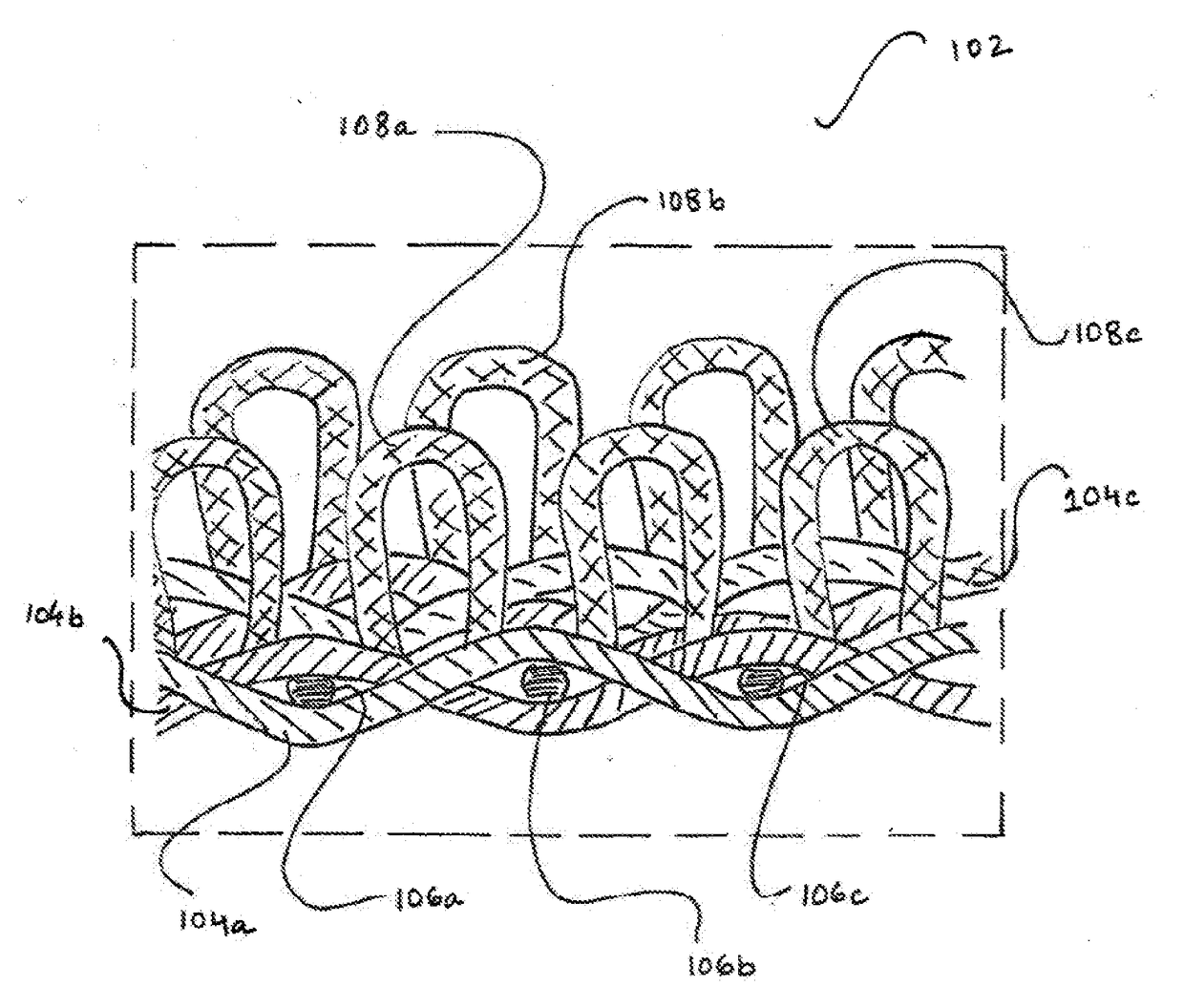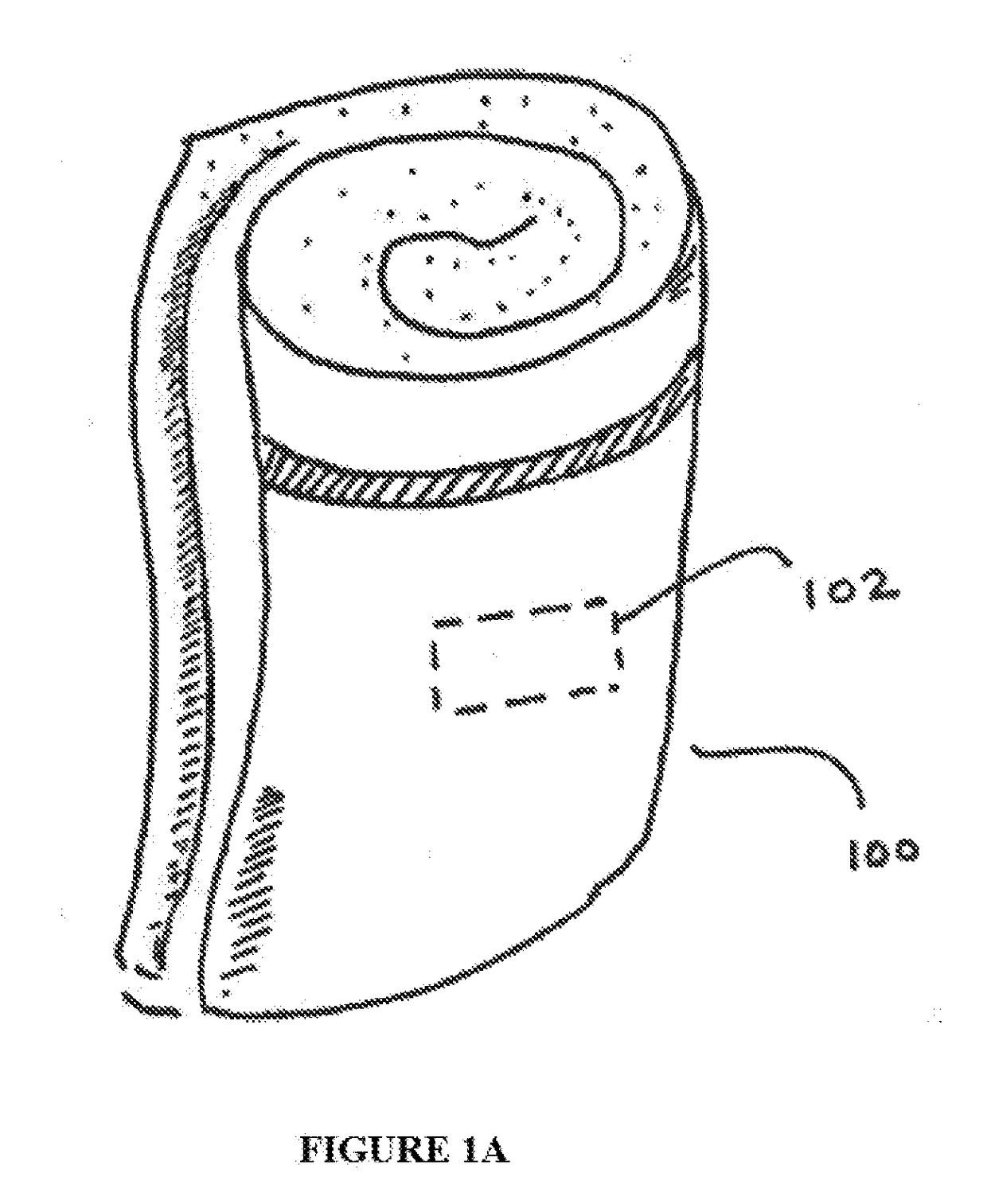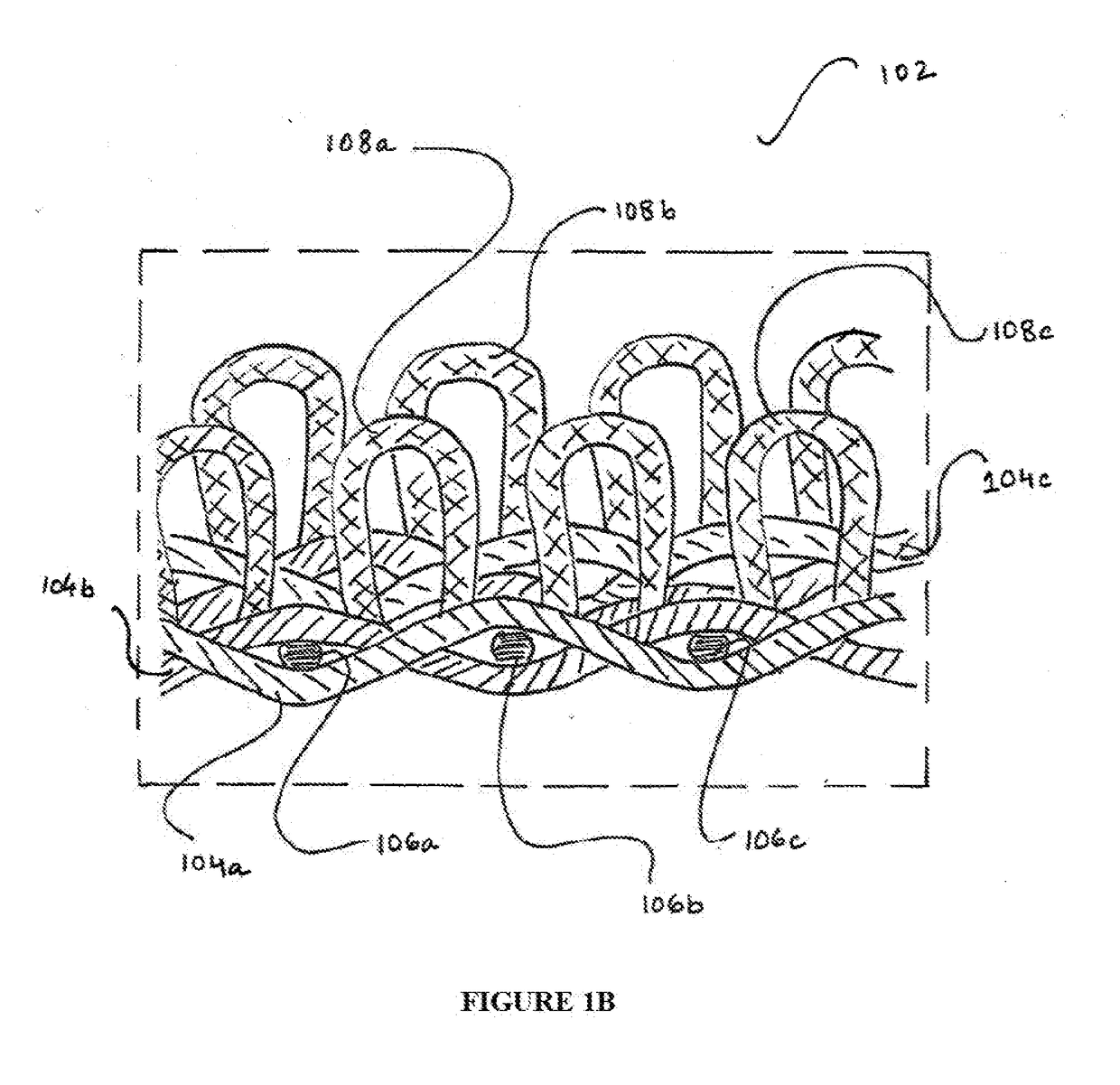Fabric and method of manufacturing fabric
a technology of fabric and fabric, applied in the field of textile fabrics and methods of manufacturing textile fabrics, can solve the problems of waste of materials, high cost of water soluble fibre dissolution, and environmental hazards of discharge of water soluble fibres
- Summary
- Abstract
- Description
- Claims
- Application Information
AI Technical Summary
Benefits of technology
Problems solved by technology
Method used
Image
Examples
Embodiment Construction
[0017]The present invention provides novel methods of manufacture for fabrics having pores or interspaces within one or more yarns therein, said fabrics having improved porosity, wettability, absorbency, softness and / or loft.
[0018]The process of manufacturing a fabric in accordance with the present invention is illustrated in FIG. 2.
[0019]Step 202 comprises blending non-felting fibers with felting fibers to obtain blended fiber slivers / blended roving / blended feed material for the yarn spinning process.
[0020]The felting fibers having felting properties may comprise any fiber(s) that has high chemo mechanical felting property as well as solubility in an alkali solution—and in a preferred embodiment may comprise wool fibers. The non-felting fibers may comprise any fiber(s) that are non-soluble in said alkali solution. The non-felting fibers may include any one or more of cotton fibers, silk fibers, modal fibers, acrylic fibers, rayon fibers, polyester, viscose, or any combination there...
PUM
| Property | Measurement | Unit |
|---|---|---|
| Temperature | aaaaa | aaaaa |
| Temperature | aaaaa | aaaaa |
| Temperature | aaaaa | aaaaa |
Abstract
Description
Claims
Application Information
 Login to View More
Login to View More - R&D
- Intellectual Property
- Life Sciences
- Materials
- Tech Scout
- Unparalleled Data Quality
- Higher Quality Content
- 60% Fewer Hallucinations
Browse by: Latest US Patents, China's latest patents, Technical Efficacy Thesaurus, Application Domain, Technology Topic, Popular Technical Reports.
© 2025 PatSnap. All rights reserved.Legal|Privacy policy|Modern Slavery Act Transparency Statement|Sitemap|About US| Contact US: help@patsnap.com



